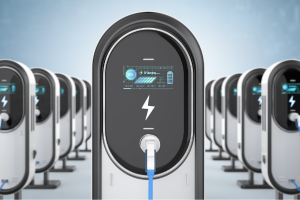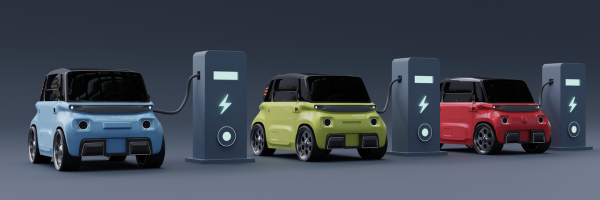Table Of Content:
- Introduction
- Understanding the Lifespan of Electric Vehicles (EVs) Batteries
- How to Maximize the Lifespan of Electric Vehicles(EVs) Batteries.
- Conclusion
- Frequently Asked Questions
Introduction:
Electric vehicles (EVs) have garnered significant attention in recent years as a promising solution to reduce carbon emissions and combat climate change. Central to the performance and sustainability of Electric Vehicles (EVs), the another concern is the Lifespan of Electric Vehicles (EVs) batteries, which store the energy necessary to power these vehicles. However, concerns regarding the lifespan of electric vehicle batteries persist among consumers and industry experts alike.
In this comprehensive guide, we delve into the factors influencing the lifespan of EV batteries and provide practical tips to maximize their longevity.
Understanding the Lifespan Of Electric Vehicles (EVs) Batteries.


The lifespan of an electric vehicles (EVs) batteries refers to the duration it can effectively retain its energy storage capacity before needing replacement or significant degradation. Unlike traditional internal combustion engine vehicles, where the lifespan of Electric Vehicles (EVs) batteries is primarily determined by factors such as mileage and maintenance, The lifespan of Electric Vehicles (EVs) batteries is influenced by a myriad of factors, including:
- Battery Chemistry: The chemistry of the battery cells plays a crucial role in determining lifespan. Most electric vehicles today utilize lithium-ion batteries due to their high energy density and relatively long lifespan compared to other chemistries.
- Depth of Discharge (DOD): The depth to which the battery is discharged during each cycle affects its longevity. Shallow discharges (charging the battery after only a small portion of its capacity has been used) are less stressful on the battery and can extend its lifespan.
- Temperature: Temperature extremes, both hot and cold, can impact battery performance and longevity. High temperatures accelerate chemical reactions within the battery, leading to degradation. while extreme cold can reduce the battery’s ability to deliver power.
- Charging Habits: The manner in which an Electric Vehicles (EVs) is charged can significantly impact battery lifespan. Fast charging and frequent rapid charging sessions can increase stress on the battery cells, potentially reducing their longevity over time.
Maintenance and Care: For Proper maintenance and care practices there are some steps which should be followed such as
- avoiding frequent full discharges,
- keeping the battery within optimal temperature ranges,
- avoiding exposure to extreme temperatures for prolonged periods, can help preserve battery health.
How To Maximizing the Lifespan Of Electric Vehicles (EVs) Batteries.

Now that we have a better understanding of the factors influencing the Lifespan Of Electric Vehicles (EVs) batteries , let’s explore practical strategies to maximize the longevity of EV batteries which includes major points such as:
- Charge Conservatively: Aim to keep the battery within the optimal state of charge range, typically between 20% and 80%. Avoid frequent full discharges and extreme high or low states of charge, as these can accelerate degradation.
- Utilize Scheduled Charging: Many EVs offer scheduled charging features, allowing you to program charging times to coincide with off-peak electricity rates. This not only saves money but also reduces stress on the battery by avoiding charging during periods of high demand or extreme temperatures.
- Limit Fast Charging: While fast charging is convenient for long-distance travel, excessive use can impact battery health. Whenever possible, opt for slower charging methods, such as Level 2 chargers, which impose less stress on the battery.
- Manage Temperature: Park your EV in shaded areas or garages during hot weather to prevent excessive heat buildup in the battery. In colder climates, consider preheating the battery before driving to improve performance and efficiency.
- Monitor Battery Health: Stay informed about your battery’s health and performance through the vehicle’s onboard diagnostics or dedicated smartphone apps. Address any abnormal behaviour promptly to prevent further degradation.
- Practice Gentle Driving: Aggressive acceleration and braking can increase energy consumption and stress on the battery. Drive smoothly and anticipate stops to minimize strain on the battery pack.
- Regular Maintenance: Follow the manufacturer’s recommended maintenance schedule for your EV, including battery inspections and software updates. This ensures optimal performance and identifies potential issues early on.
Conclusion:
The lifespan of Electric Vehicles(EVs) batteries is a critical factor influencing the overall ownership experience and environmental impact of Electric Vehicles (EVs). By understanding the factors that affect battery longevity and adopting practical strategies to maximize lifespan, EV owners can enjoy many benefits like
- Extended driving range,
- Reduced operating costs,
- A more sustainable transportation solution.
As the automotive industry continues to innovate and improve battery technology, the longevity of electric vehicle batteries is expected to further improve, making EVs an even more attractive choice for consumers worldwide.

Frequently Asked Questions:
The lifespan of an EV battery varies depending on several factors such as the manufacturer, usage patterns, environmental conditions, and battery chemistry. However, on average, modern EV batteries are designed to last between 8 to 15 years or around 100,000 to 300,000 miles before needing replacement or significant degradation.
Usage patterns play a significant role in determining the lifespan of an EV battery. Frequent fast charging, deep discharges, and sustained high-speed driving can accelerate battery degradation. Conversely, gentle driving, regular charging at moderate rates, and avoiding extreme temperature conditions can help prolong the battery’s lifespan.
Yes, extreme temperatures, both hot and cold, can affect the performance and longevity of EV batteries. High temperatures can accelerate chemical reactions within the battery cells, leading to faster degradation, while very cold temperatures can reduce the battery’s efficiency and overall capacity. Proper thermal management systems in EVs can mitigate these effects to some extent.
Several factors contribute to the degradation of EV batteries over time, including cycling (charging and discharging), temperature fluctuations, calendar aging (time-based degradation), manufacturing defects, and exposure to high levels of humidity. Additionally, fast charging and rapid acceleration can increase stress on the battery cells, leading to faster degradation.
Manufacturers employ various strategies to enhance the longevity and reliability of EV batteries, including rigorous testing, advanced battery management systems (BMS), thermal management systems, and improved battery chemistries. Research and development efforts focus on developing next-generation battery technologies such as solid-state batteries, silicon anodes, and improved electrolytes, which promise longer lifespans, higher energy densities, and faster charging capabilities.
These questions and answers provide a comprehensive overview of the factors influencing the lifespan of electric vehicle batteries and address common concerns among potential EV buyers and owners.

